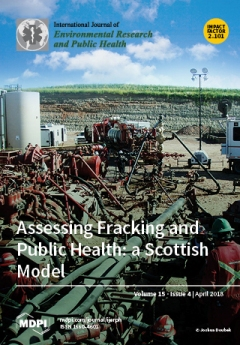1
Department of Biodiversity and Molecular Ecology, Research and Innovation Centre, Fondazione Edmund Mach, 38010 San Michele all’Adige, Italy
2
Department of Earth Observation Science, Faculty of Geo-Information Science and Earth Observation (ITC), University of Twente, 7500 AE Enschede, The Netherlands
3
Institute of Zoology, Slovak Academy of Sciences, 84506 Bratislava, Slovakia
4
Parasitological Institute, Slovak Academy of Sciences, 04001 Košice, Slovakia
5
Department of Anatomy, Pavol Jozef Šafárik University, 04001 Košice, Slovakia
6
Institute of Virology, Biomedical Research Center, Slovak Academy of Sciences, 84505 Bratislava, Slovakia
7
Avia-GIS, Risschotlei 33, 2980 Zoersel, Belgium
8
Mundialis GmbH & Co. KG, 53111 Bonn, Germany
9
Institute of Vertebrate Biology, v.v.i., Academy of Sciences of the Czech Republic, 60365 Brno, Czech Republic
10
Institute of Macromolecular Chemistry CAS, 16206 Prague 6, Czech Republic
11
Comparative Tropical Medicine and Parasitology, Ludwig-Maximilians-Universität, 80802 Munich, Germany
12
Institute of Parasitology, National Centre for Vector Entomology, Vetsuisse-Faculty, University of Zurich, 8057 Zürich, Switzerland
13
Institute of Infectology, Friedrich-Loeffler-Institut, 17493 Greifswald, Germany
14
Department of Parasitology and Zoology, University of Veterinary Medicine, 1078 Budapest, Hungary
add
Show full affiliation list
remove
Hide full affiliation list
Abstract
The incidence of tick-borne diseases caused by
Borrelia burgdorferi sensu lato,
Anaplasma phagocytophilum and
Rickettsia spp. has been rising in Europe in recent decades. Early pre-assessment of acarological hazard still represents a complex challenge. The aim of this study was to model
Ixodes
[...] Read more.
The incidence of tick-borne diseases caused by
Borrelia burgdorferi sensu lato,
Anaplasma phagocytophilum and
Rickettsia spp. has been rising in Europe in recent decades. Early pre-assessment of acarological hazard still represents a complex challenge. The aim of this study was to model
Ixodes ricinus questing nymph density and its infection rate with
B. burgdorferi s.l.,
A. phagocytophilum and
Rickettsia spp. in five European countries (Italy, Germany, Czech Republic, Slovakia, Hungary) in various land cover types differing in use and anthropisation (agricultural, urban and natural) with climatic and environmental factors (Normalized Difference Vegetation Index (NDVI), Normalized Difference Water Index (NDWI), Land Surface Temperature (LST) and precipitation). We show that the relative abundance of questing nymphs was significantly associated with climatic conditions, such as higher values of NDVI recorded in the sampling period, while no differences were observed among land use categories. However, the density of infected nymphs (DIN) also depended on the pathogen considered and land use. These results contribute to a better understanding of the variation in acarological hazard for
Ixodes ricinus transmitted pathogens in Central Europe and provide the basis for more focused ecological studies aimed at assessing the effect of land use in different sites on tick–host pathogens interaction.
Full article





